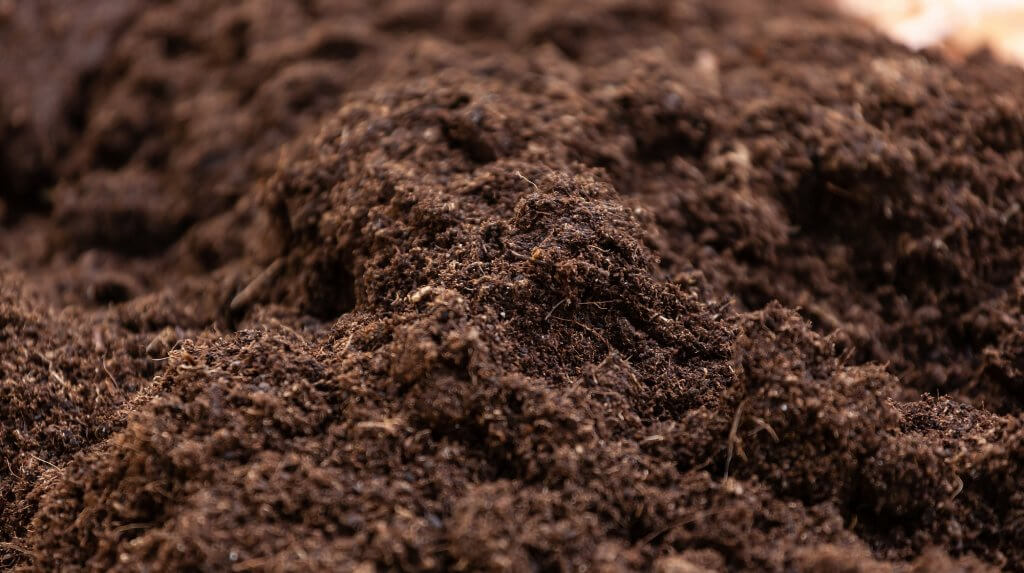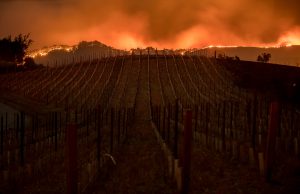The Left Bank as wine lovers know it didn’t gain notoriety for being one of the world’s best locales for wine until the beginning of the 18th century. Once it did though, it established the benchmark for some of the finest wines in the world today. One of the key reasons that wine from the Left Bank, the home for all 1855 official Classified Bordeaux wines, is so highly regarded has much to do with the unique soil types and grape varieties.
By location alone, the Left Bank has the more ideal positioning closer to the ocean. And while that gives the vineyards in the region more of a maritime influence with more rainfall and cooler days in the growing season, it goes so much deeper under the surface.
The soil from which these famed vines grow holds clues in how wine from each of the major appellations of the Left Bank will taste. Discovering the many subtle as well as vast differences between each holds the key for tasting the best that Bordeaux has to offer.
Haut-Médoc
Stretching from the south in Blanquefort and beyond St-Estèphe in the north, this appellation is nothing short of huge. Haut-Médoc appellation is not the same as Médoc, which can make things a bit confusing. While there is much to know, our focus here is strictly upon the soils in this region. That being said, most of Medoc’s soil is inferior to what you’ll find in the Haut-Médoc.
But since it’s so vast, the differences in the soils and terroir certainly play a major role in the style and quality of the wines from this appellation. Here, you find most of the soils composed from thick layers of gravel which were once swept away down the river. Over time, they built up on top of a heavy clay base. With warm and well-drained gravel terraces, it is the perfect environment for Cabernet Sauvignon to ripen with absolute efficiency.
Move further inland in the appellation though and the soils become more of a deep clay deposit composition. And then, you’ll find portions that have patches of limestone with sandier soil that bring more diversity to this primarily gravel-driven area.
Because of this sprawling size and the differences in each pocket for the soil, it’s a bit difficult to pinpoint a specific flavor, character, or style from the Haut-Médoc wines. They vary from estate to estate, and perhaps the most fun you’ll have is sampling them to discover the different nuances each soil characteristic brings.
When it comes down to it, the soil of the wines in this appellation contain deposits of Garonne gravel along with sand, clay, and limestone in varying degrees. The best vineyards all have those deep gravel soils though, ideal for flat or only slightly sloped elevations to drain the water away.
The vastness of this land gives way to much diversity in terroir, soil, and micro-climates. In the north, there’s more gravel, clay, and limestone along with cooler soil and temperatures to match. Harvesting here usually occurs a day or so later than in the south.
In the west though, there is usually more clay. Head south, and the soils are finer and flatter with gravel. And then there are the elevations which range from a mere 3 meters on up to 44 meters, the highest in the entire Left Bank.
In the west of the appellation, the soils often have a higher clay content and as you travel further south, you find finer soils and flatter terroir with gravel, but with more sand in slightly warmer temperatures as well.
All told, the Haut-Médoc has 21 different communes and with the often overlooked smaller inland Moulis and Listrac going off the radar. Moulis is the smallest in Médoc yet is filled with Cru Bourgeois. The location is inland, further from the Gironde, which means the terroir is a bit cooler than the rest of the main appellation.
In addition to being a bit cooler, Moulis’ soil consists of gravel for the most part with a little clay and limestone mixed in for good measure. Thanks to the natural drainage, wines from Moulis tend to be more elegant, especially when compared to those of Listrac.
Listrac wasn’t an appellation until 1957. Here, the soil is also mostly gravel and clay with limestone and sand. Some of the highest elevations in Medoc are in Listrac. It’s inland, nestled into a heavily wooded area far from the Gironde. This keeps it slightly cooler so you get grapes that are a bit less ripe. The difference this makes is that the impact on the natural drainage along with the temperatures create a bit of a rustic character in Listrac wines. Both of these small appellations are a good place to start when entering the world of wine as although a little harder to find, they are far more approachable from a monetary perspective, good value before entering the truly expensive appellations.
Margaux
Margaux wines get their distinctive textures and flavors from the soil. With a high gravel content, it creates an outstanding drainage situation that’s different from nearby Pauillac and St-Estèphe, both of which feature more clay. Because of the gravel composition in the soil, the vines must seek deep into the land to find nourishment and water, making them stronger as well as more fascinating with the characteristics of deeper soils coming through.
In Margaux, it is said to be one of the most diverse of any of Bordeaux’s major appellations. The size means that the terroir will vary as you move along from one chateau to the next. As a whole though, the lack of clay and the persistent gravel make it ideal for grapes to thrive.
This composition is precisely why the wines of Margaux are so esteemed. They provide natural drainage, retain heat while reflecting sunlight, and by nature, force the vines to root deep down into the soils. While some estates do have more clay in their terroir, it is the exception to the rule. Those that do often take advantage of more Merlot in theory blend to counter the predominance of Cabernet Sauvignon.
Comparatively to other appellations, the lack of depth for Margaux’s soils allows them to heat up much more quickly resulting in grapes maturing before the other appellations. On the Left Bank, Margaux is usually the first to be picked during the harvest. One taste of Margaux wine and you’ll see how the mostly gravel-based composition reflects in the elegant, intense, and stunning floral charms. Like violets, it is a treasured flavor, resplendent in the lengths the vines will go to deep down in the soil. Cabernet Sauvignon is the king of this appellation and it boasts the most amount of First Growth Chateaux.
Pauillac
Pauillac earned its stellar reputation no doubt through the terroir and soil in the appellation. It’s incredibly varied, distinctive from surrounding St-Julien on the south and St-Estèphe to the north. Some say it has the perfect soil for Cabernet Sauvignon grapes, making for Bordeaux’s finest wines.
To understand Pauillac best, it helps to view it as two large areas rather than one mass. In the northern portion, the land sits at slightly higher elevations. The soils here tend to be deep with gravel sitting atop a bed of sand, limestone, and marl. On the southern end, the larger, gravel rocks and stones persist with more clay further down in the sub-soils.
Thanks to the Gironde estuary, the vineyards here have better access to water. In the soils, the iron and clay composition lend a reddish-brown hue but the further north you go, it gives way to that limestone and marl.
These vineyards have more access to water from the Gironde estuary. You can further subdivide the terroir of Pauillac along the lines of a compass. At the lower southern end of the appellation, the soils in Pauillac feature gravel, rocks and stones of various size and sand with deposits of iron in the clay.
Head west toward the inland and there’s less gravel to be found. Instead, smaller stones and rocks are mixed with the sand in the soil. Generally though, these rocky soils are ideal for growing grapes. The vines must stretch deep into the soil, a rite of passage to thrive so well. The soils of Pauillac wouldn’t work for any other type of agriculture, but for grapes, they are the key to the success of this appellation.
St-Estèphe
The variety of styles from St-Estèphe are noted as being true terroir wine. In particular, the influence of the soil with gravel and a bit more clay than Médoc can be tasted with each sip. Nearby Pauillac, the contrast between St-Estèphe is fascinating given that the distance between them is minute.
You wouldn’t need to be completely astute to notice the rich mixture in the soils here, composed of rocks, clay, gravel, and limestone atop the surface. What lies beneath though is a complex blend that creates the distinction of this appellation.
St-Estèphe features slopes and elevations, and due to its proximity to the river has a bit of a micro-climate itself. Divergent terroirs reign across the appellation, adding more complexity to the Bordeaux in these lands. On the lower terraces, the soil features more gravel, but head east and marine limestone becomes a major player. What’s more, in the south portion of this area, the sub-soils are filled with loam. The biggest difference in the wines here is that the large clay deposits help the appellation create amazing wine even in hot and dry years, making it a prime choice during any vintage.
St-Julien
Of all the major Bordeaux appellations in the Left Bank, St-Julien is the smallest. Yet in that small stature, it packs a powerful punch in the way of soil composition. This is evident in the different styles where you’ll find powerful, tannic, and rather masculine creations alongside more traditional styles.
For some wines, they may be mistaken for wines from Pauillac which is easy to see. After all, they are neighbors. But the discerning palate will know the difference for St-Julien has an even more elegant and refined style to it.
In almost a rectangle of sorts, the soils are a mix of gravel, clay, sand, and limestone. There are also plenty of diverse rocks and stones in a medley of sizes and shapes. More gravel is found to the north and east but in the west, particularly as you move southward, you will find more sand and smaller gravel stones. It’s this gravel that gives the vines the drainage it needs, creating perfect sunlight and warmth for deep vine growth into the soils. Among the best vineyards are those that slope gently and access the Gironde where the micro-climate brings the best bounty of the land.
Sauternes & Barsac
The most famous botrytis wines thrive in these communes. Often the vineyards here are simply united under ‘Sauternais.’ Here is where you get those syrupy wines, much thanks to the gravel layers that develop in the knolls on the clay sub-soils. The noble rot or botrytis thrives from the climate as yields stay low for phenomenal sweet wines.
Ciron, a little stream, is primarily responsible for creating the captivating morning and night mists in the autumn. It’s almost magical as the heat and moisture combine to form a special bacterium that creates the noble rot. This is the reason why Sauternes is still the reigning champion of mellow wines that are complex, rich, and abundant in sugar.
Just a few small differences can be found between Sauternes and Barsac. Namely, Sauternes is a little hillier which makes those mists more effective while Barsac features flatter lands that are brimming with sand and limestone to craft more elegant and fine flavors.
Each of the major appellations of the Left Bank has its own nuances. But even for those who adore Bordeaux, delving deeper into the soils provides a new perspective and newfound appreciation for the wines that are crafted in the gem of France.







